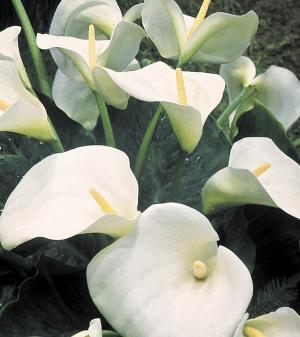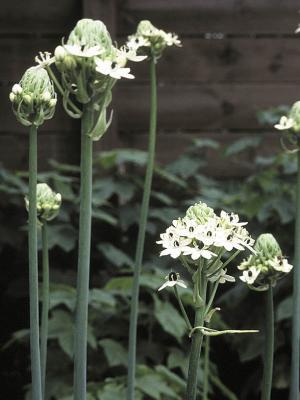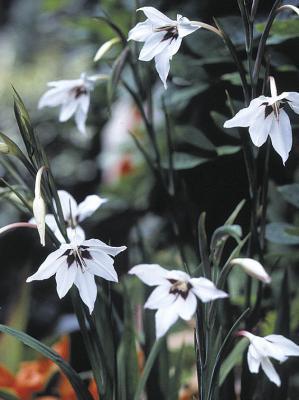By Carol Cowan
 | |
| Calla aethioica | |
In Canada, where we have only five or so months in which to enjoy our gardens, the idea of making them as attractive at night as they are during the day, seems to be a concept that's taken an awfully long time to arrive. With artful plantings, a selection of some of the wonderful garden lighting that has recently arrive on the marketplace, a comfy chair or two, good music in the background and a pitcher of one's favourite summer beverage, there couldn't possible be a better setting for balmy summer evenings.
The colours that glow
While the Japanese have several good examples of moonlit gardens, the world's most famous is probably England's Sissinghurst Castle, where there are breathtaking examples of creams, whites, silver, pale lavender and a touch-of-rose blooms -- the colours which glow in the moonlight garden.
Gray-green, variegated green and white or silver-leafed plants which reflect the dim light of the moon, or garden lighting, are the visible, nighttime companions to the whites and creams of the blossoms.
A signature flower for any night-lit garden is the moonflower, (Ipomoea alba) the annual twining vine with trumpet shaped flowers. From early summer to late autumn, this aptly-named flower blooms at dusk and closes at dawn.
Shade and texture
Night interest gardens are becoming increasingly popular among Canadian consumers. This burgeoning trend presents a host of opportunities for landscape designers and garden centre retailers.
|
When designing these gardens, or helping consumers design their own, suggest that in order to make their outdoor summer evenings even more visually interesting, that plants are placed so that the leaves and flowers of one, contrast in shape and size with those nearby. And the more fragrant the flowers are, the more they will be noticed in the still of the night. For example, the elegant white trumpets of the longiflorum lily make a wonderful companion to the ruffled petals of white roses. White begonias are a great neighbour for blue-leafed hosta or white impatiens.
Some unusual choices
One final tip... All photos courtesy of the International Bloembollen Centrum, Hillegom, Holland |

